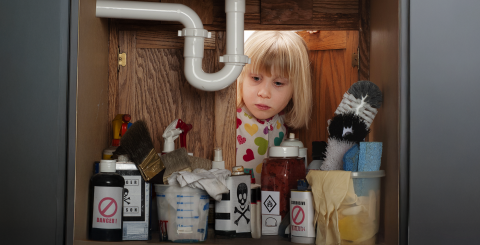Heating with wood: What to do with the ashes

According to data from Sécurité publique du Québec, wood-burning appliances cause an average of 235 building fires per year in Quebec. These fires, which can be caused by improper installation, inadequate maintenance, or hot ashes, put human lives at risk and can cause serious damage
Failure to clean your chimney after the burning season is over can have serious consequences, including carbon monoxide poisoning, smoke and creosote damage, and wear and tear to your wood stove. That’s why annual maintenance of wood-burning appliances is so important, as is safely disposing of ashes on a regular basis. Learn more about the risks related to fireplace ashes and how you can get rid of them safely in order to protect your home against fire.
Beware of hot ashes!
Of the 235 building fires caused by wood-burning appliances each year in Quebec, provincial public safety data shows that an average of 140 are caused by improperly stored ashes. What’s more, ashes are among the top ten heat sources identified by firefighters. Not only do they cause fires, they can also put you and your family at risk of carbon monoxide poisoning.
The biggest mistake people make is to store ashes in the wrong type of container. Never underestimate the heat that ashes can generate, even long after the fire is out. Did you know that ashes can stay hot for up to 72 hours?
Steps to take for proper disposal
1. Handle ashes with a metal shovel: When removing ashes from the stove or fireplace, use a metal shovel to transfer them to an appropriate container. Never use a vacuum cleaner on hot ashes!
2. Store ashes outside: Never store them in the house or garage. To prevent fires, always store ashes outdoors in a proper container.
3. Use a suitable container: Store your ashes in a metal container with a raised bottom and a lid.
4. Keep the container away from any exterior walls: Place it on a non-combustible surface at least 1 meter from the walls of your house, garage, or shed. Ensure a safe distance from flower beds, hedges, barbecues, portable shelters, and other inflammable items as well.
5. Stir regularly: Stir the ashes in the container regularly. Before disposing of them permanently, make sure they’re not giving off any smoke or heat.
6. Wait at least seven days before you throw them out: Allow about a week before emptying your ashes into the organic waste or garbage bin. Check municipal regulations about ash disposal. For maximum safety, store your ashes all winter and dispose of them in the spring.
Cool fact − Did you know that ashes are rich in phosphorous, potassium, and calcium? Some municipalities collect ashes to turn them into fertilizer, reducing the amount of waste that goes to landfill. Careful! Don’t add ashes to your household compost. Along with the fire risk, ashes can be harmful for some soils because of their pH, or if you add too much to your compost.
Tips for staying safe when heating with wood
Heating with wood is pleasant and effective, but there are fire- and smoke-related risks you need to be aware of when using wood-burning appliances. Protect your property and your family by following these tips:
Maintain and inspect your wood-burning appliance:
Every spring, inspect and maintain the different components of your wood heating system. Pay special attention to the general condition of your appliance, the chimney connector, the door gasket, and your chimney.
Deal with a professional:
More than one-third of all house fires in Quebec start in a chimney. Creosote, a highly flammable tar-like substance deposited by smoke, can build up inside the chimney. Reduce the risk of fire by bringing in a professional chimney sweep.
Keep firewood at a distance:
Wood is combustible, which means it’s a major fire hazard. That’s why you should only keep a minimum amount of firewood indoors, and store it away from your stove or fireplace and any other heat sources.
Install carbon monoxide detectors:
In addition to smoke detectors, you should install carbon monoxide detectors if you have a wood-burning appliance. Carbon monoxide is a highly toxic gas that can be life-threatening for you and your family. Install detectors near bedrooms and in common rooms near your stove or fireplace, as well as in the basement. Detectors must be installed far from windows, doors, and ceiling fans.
Make sure you have a portable fire extinguisher:
If you have a wood stove, you should have at least one ABC dry chemical portable fire extinguisher (minimum 5 lb.) in your home.
Check your home insurance policy:
Every year, chimney fires cause an average of $50,000 in damage per fire. To ensure your claim isn’t rejected or revised, be sure to notify your insurer if you install a wood-burning appliance in your home or any other building on your property.
Contact your Promutuel Insurance representative or request a home insurance quote today!




